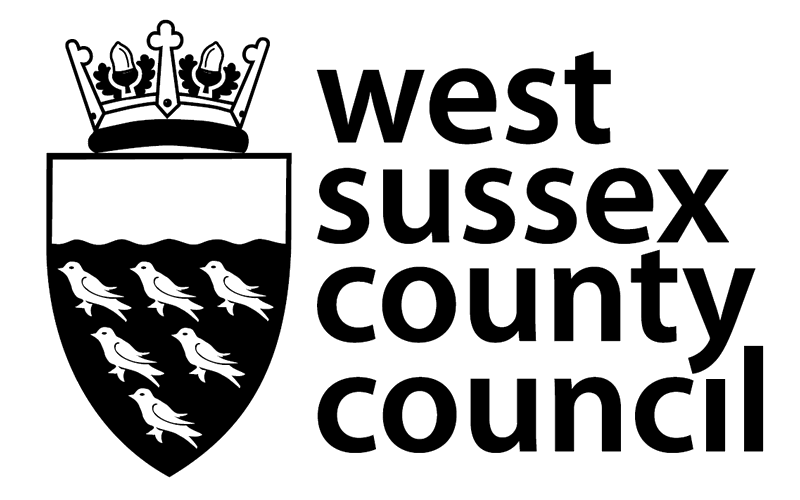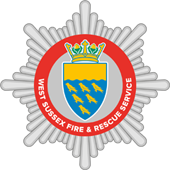2 How fire service performance is monitored
The Cabinet Member meets regularly with the Chief Fire Officer and sets clear strategic objectives for the fire service. These are included in the Community Risk Management Plan (IRMP).
Overview and scrutiny of the fire service is the responsibility of the Fire & Rescue Service Scrutiny Committee (FRSSC). Fire service matters, including performance data, are considered at committee meetings, which you can view online.
To find out more about West Sussex Fire & Rescue Service, read our annual report.
3 Our core code of ethics
West Sussex Fire & Rescue Service has adopted and embedded the new core code of ethics as a framework for all of its staff to carry out their work by.
These were prepared by the Local Government Association (LGA), the National Fire Chiefs Council (NFCC) and the Association of Police and Crime Commissioners (APCC).
Our core code of ethics are:
- Putting our communities first - We put the interest of the public, the community and service users first.
- Integrity - We act with integrity, including being open, honest and consistent in everything we do.
- Dignity and respect - Making decisions objectively based on evidence, without discrimination or bias.
- Leadership - We are all positive role models, always demonstrating flexibility and resilient leadership. We are all accountable for everything we do and challenge all behaviour that falls short of the highest standards.
- Equality, diversity and inclusion (EDI) - We continually recognise and promote the value of EDI both within the FRSs and the wider communities in which we serve. We stand against all forms of discrimination, create equal opportunities, promote equality, foster good relations and celebrate difference.
4 Our drone and how we use it
The drone (unmanned aerial vehicle) helps us survey an incident from above, providing live images and thermal imagery. By providing an aerial view of an incident, drones help incident commanders develop tactics to help tackle it.
Drones may also be able to access areas which are unsafe for firefighters. Overall, they improve safety for our crews and help improve our response to incidents.
The thermal imaging camera can detect heat sources and may be used to:
- check the temperature of cylinders at risk of exploding
- monitor heat spread in a warehouse fire
- spot casualties in water
There are 2 cameras that can be fitted to the drone:
- a high-definition camera for image photography and video recording
- a thermal imaging camera that detects heat
A robust privacy impact assessment and mitigation has been created to prevent filming or photography that is not required.
Drone operators
In order to operate the drone, a drone pilot must have completed a Civil Aviation Authority (CAA) accredited training course and carry out extra training for more specialist uses, such as night flying.
The drone is operated by a minimum of 2 people - one who pilots it and one who operates the cameras. Whenever possible, a third person will also attend to help with setting up and acting as an observer for any hazards.
Drone flight restrictions
As part of the ‘Permissions for Commercial Operations’, and also as responsible drone operators, WSFRS will always ensure that the drone is flown:
- within the line of sight of a remote pilot
- below 120 metres in height
- at least 50 metres from people, property, vehicles and vessels WSFRS is not in control of
- 30 metres away from people during take-off
- clear of any aircraft, airports and airfields
We have a General Exemption E4506 of the CAA Air Navigation Order to fly the drone outside of the normal commercial operations under emergency conditions. These form part of the CAA's drone code and all responsible drone users will fly within these guidelines.
Our operations will include responding to all incidents as detailed in the Fire and Rescue Services Act.
Record retention
The drone will only capture photographic images or video footage if there is an organisational need. Any image or video that is taken at an incident is reviewed and either destroyed if not required, or put into a robust digital storage system, which is covered by a data retention policy.
When the drone is being flown the drone pilots will always wear fire service uniform to clearly identify themselves.
Detailed records about all flights, images and footage captured and any other information about the drone that is required by the CAA are maintained.
5 Leadership team
Interim Chief Fire Officer - Gary Ball

Gary Ball was appointed Interim Chief Fire Officer of West Sussex Fire & Rescue Service in August 2025 for the next 2 years as the service prepares for devolution and local government reorganisation.
He will lead the service as it prepares for its next inspection from His Majesty’s Inspectorate of Constabularies and Fire and Rescue Services (HMICFRS).
Gary previously served as the service’s Deputy Chief Fire Officer, Assistant Chief Fire Officer, Area Manager for Service Delivery and Group Manager. He joined West Sussex Fire & Rescue Service (WSFRS) in 2017 as a Station Manager based at Bognor Regis Fire Station having begun his career at the then Hampshire Fire & Rescue Service as a firefighter in 2002 and served the communities of Portsmouth and Southampton for 12 years.
Since joining WSFRS he has led a number of significant projects within the service, such as implementing the service’s improvement plan following inspections from HMICFRS, which has seen huge improvements in the service’s transformation journey. He also led the introduction of the Performance and Assurance Framework which provides structure and governance arrangements to ensure that statutory obligations are being suitably scrutinised and delivered.
As Area Manager for Service Delivery, he worked with firefighters to create the service’s new day-crewing model - a key priority set out in the fire service’s Community Risk Management Plan.
Nationally, Gary has previously been seconded to HMICFRS, and also served as the National Fire Chiefs Council’s (NFCC) lead for on-call Practitioners Group, which has seen him set a ground-breaking new project in motion around retained firefighter recruitment.
Assistant Director FRS Strategy, Improvement and Assurance - Sabrina Pennington-Down

Sabrina Pennington-Down is WSFRS’s first non-operational Assistant Director and was appointed to the role in September 2025.
She has led the service’s Organisational Assurance and Governance team for several years, playing a pivotal role in strengthening decision-making, governance, and strategic oversight.
Sabrina joined West Sussex Fire & Rescue Service in 2012 as a Project/Change Manager, delivering a wide range of strategic projects including fire station location reviews, fleet and equipment procurement and crewing model redesigns. Her early work laid the foundation for her future leadership in service transformation and assurance and offers a good understanding of the organisational memory which is important to be cognisant of at times of complex change.
She went on to lead the Programme Management Office, where she successfully delivered the HMICFRS Improvement Plan and managed the relocation of West Sussex Fire Control to Surrey, establishing the Joint Fire Control in 2019. As Head of Organisational Assurance & Governance, Sabrina embedded the Performance & Assurance Framework and led the development of the Community Risk Management Plan (CRMP), contributing to a stepped improvement outcome from HMICFRS.
More recently her focus has been on the enabling services including Fleet, Joint Fire Control as well as providing strategic oversight of core contract renewals. As Assistant Director, Sabrina is responsible for:
- organisational assurance and governance
- operational training and professionalism team
- operational learning
- risk
- assurance
- policy
- fleet
Her focus is on driving strategic improvement, embedding learning and ensuring the service remains resilient and being future ready.
Assistant Chief Fire Officer - Andy Piller

Andy Piller was appointed as WSFRS’s Assistant Chief Fire Officer in September 2025.
He previously served as Area Manager for Service Delivery having joined WSFRS as a Group Manager in 2020. In this time he served in Strategic Risk and Improvement, Response, Service Delivery and Service Delivery Support, helping to deliver many different projects, realigning functions and refocussing on department priorities with people being his passion.
He joined the then Hampshire Fire & Rescue Service in January 2003 as a firefighter, serving as a wholetime and on-call firefighter based at Eastleigh Fire Station. After being promoted to Crew Manager and then Watch Manager, he worked in areas including operations, community and schools education and response support.
He also served as an Incident Command Support Unit Technician and Firesetters Practitioners before being promoted to Station Manager where he oversaw workforce planning and later as Station Manager for the New Forest Group. His final role in Hampshire saw him oversee the Resource Management Team from 2017 before he joined West Sussex Fire & Rescue Service in April 2020.
As Assistant Chief Fire Officer, Andy oversees the service’s Prevention, Protection and Service Delivery areas.


